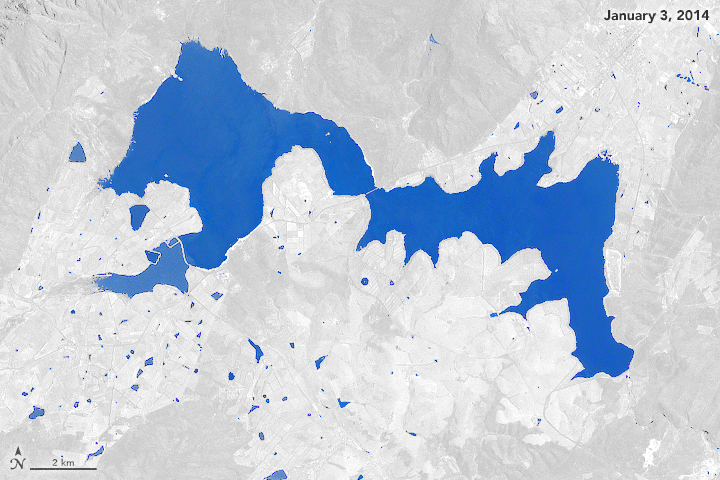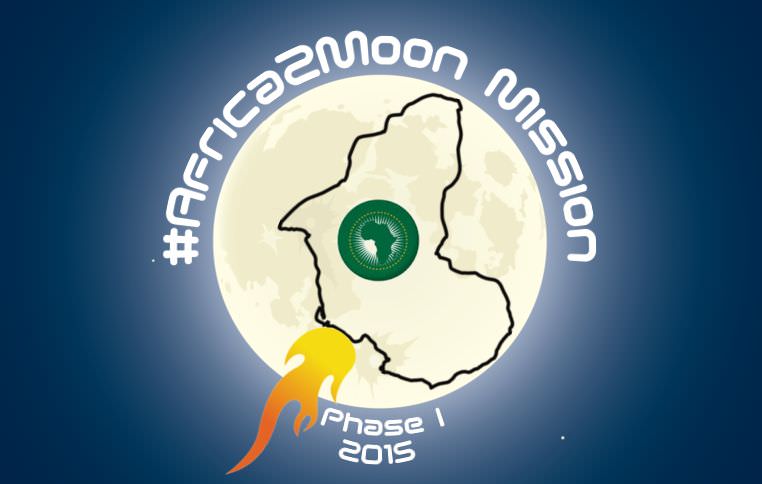At twin ground-breaking ceremonies today in South Africa and Australia, project leaders formally marked the start of construction on what will be the largest radio telescope ever built. Dubbed the Square Kilometer Array Observatory (SKAO) – referring to the total area the antennas and dishes will cover when complete – the telescope is not a single detector but rather a collection of them, connected across two continents using a technique known as interferometry (the same technique used by the Event Horizon Telescope, which took the first ever photograph of a black hole in 2019).
Continue reading “Construction Begins on the Square Kilometer Array”The Space Court Foundation Presents: “Women of Color in Space”
In the coming generations, humanity’s presence in space is expected to grow considerably. With everything from space tourism, the commercialization of Low Earth Orbit (LEO), asteroid mining, and maybe even settlements on the Moon and Mars in mind, there appears to be no limit to what we hope to accomplish. Another interesting thing about the modern space age is the way it is becoming more open and accessible, with more people and nations able to take part.
Unlike the Space Race, where two nations dominated the playing field and astronauts corps were almost exclusively made up of white men, space exploration today is more representative. However, there are still many challenges and barriers for women and people of color in space exploration and the related STEAM fields, not all of which are visible. Addressing these requires that we become better at listening to those who deal with them.
To this end, the Space Court Foundation (SCF) is launching a new series titled “Women of Color in Space.” As part of their mission to foster a conversation about space law and the future of space exploration today, this series interviews women of color who have made it their mission to advance space exploration and fulfill the promise of making space “the province of all of humanity.”
Continue reading “The Space Court Foundation Presents: “Women of Color in Space””Ep. 533: Indigenous South African Astronomy
Let’s move to another continent this week, and look at the astronomy that was going on in southern Africa in ancient times.
Continue reading “Ep. 533: Indigenous South African Astronomy”
Watch this Chilling Animation of Capetown’s Water Disappearing
For almost two decades, NASA’s Earth Observatory has provided a constant stream of information about the Earth’s climate, water cycle, and meteorological patterns. This information has allowed scientists to track weather systems, map urban development and agriculture, and monitor for changes in the atmosphere. This has been especially important given the impact of Anthropogenic Climate Change.
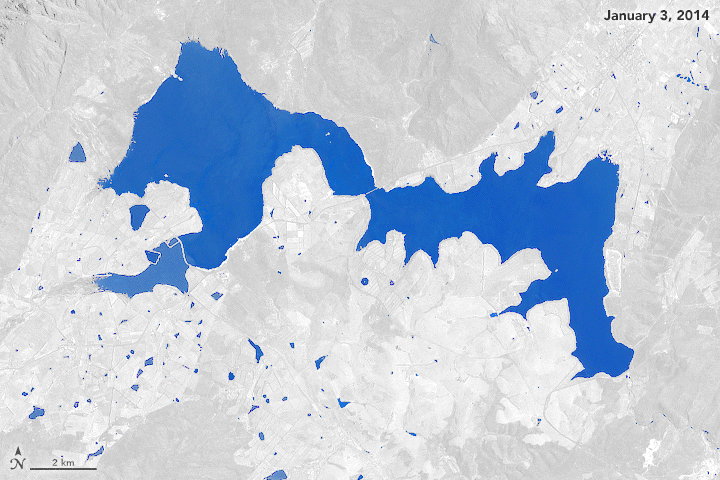
Consider the animation recently released by the Earth Observatory, which show how the city of Cape Town, South Africa has been steadily depleting its supply of fresh water over the past few years. Based on multiple sources of data, this illustration and the images it is based on show how urbanization, over-consumption, and changes in weather patterns around Cape Town are leading to a water crisis.
These images that make up this animation are partly based on satellite data of Cape Town’s six major reservoirs, which was acquired between January 3rd, 2014, and January 14th, 2018. Of these six reservoirs, the largest is the Theewaterskloof Dam, which has a capacity of 480 billion liters (126.8 billion gallons) and accounts for about 41% of the water storage capacity available to Cape Town.
All told, these damns collectively store up to 898,000 megaliters (230 billion gallons) of water for Cape Town’s four million people. But according to data provided by NASA Earth Observatory, Landsat data from the U.S. Geological Survey, and water level data from South Africa’s Department of Water and Sanitation, these reservoirs have been seriously depleted thanks an ongoing drought in the region.
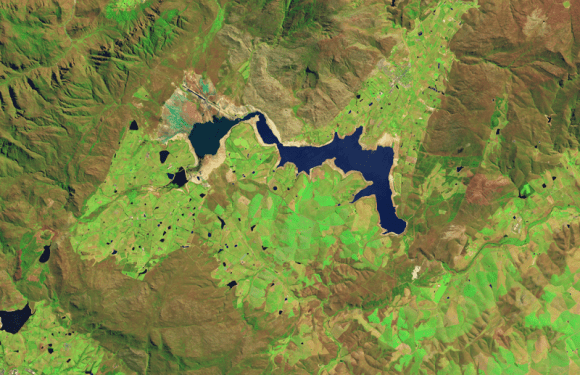
As you can see from the images (and from the animation above), the reservoirs have been slowly shrinking over the past few years. The extent of the reservoirs is shown in blue while dry areas are represented in grey to show how much their water levels have changed. While the decrease is certainly concerning, what is especially surprising is how rapidly it has taken place.
In 2014, Theewaterskloof was near full capacity, and during the previous year, the weather station at Cape Town airport indicated that the region experienced more rainfall than it had seen in decades. Over 682 millimeters (27 inches) of rain was reported in total that year, whereas 515 mm (20.3 in) is considered to be a normal annual rainfall for the region.
However, the region began to experience a drought in 2015 as rainfall faltered to just 325 mm (12.8 in). The next year was even worse with 221 mm (8.7 in); and in 2017, the station recorded just 157 mm (6.2 in) of rain. As of January 29th, 2018, the six reservoirs were at just 26% of their total capacity and Theewaterskloof Dam was in the worst shape, with just 13% of its capacity.
Naturally, this is rather dire news for Cape Town’s 4 million residents, and has led to some rather stark predictions. According to a recent statement made by the mayor of Cape Town, if current consumption patterns continue then the city’s disaster plan will have to be enacted. Known as Day Zero, this plan will go into effect when the city’s reservoirs reach 13.5% of capacity, and will result in water being turned off for all but hospitals and communal taps.
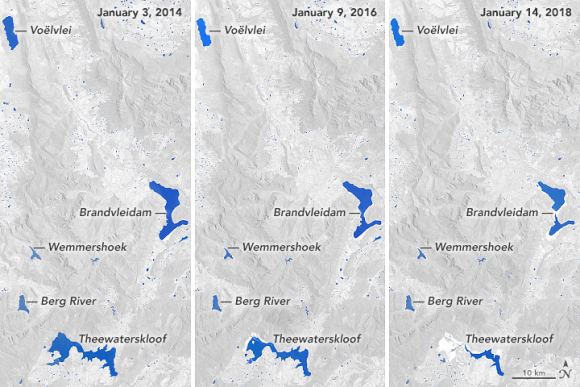
At this point, most people in the city will be left without tap water for drinking, bathing, or other uses and will be forced to procure water from some 200 collection points throughout the city. At present, Day Zero is expected to happen on April 12th, depending on weather patterns and consumption in the coming months.
Ordinarily, the rainy season last from May to September, and the implementation of Day Zero will depend on the level of rainfall. By the end of January, farmers will also stop drawing from the system for irrigation, meaning that water supplies prior to the rainy season could be stretched a little longer.
This is not the first time that Cape Town has been faced with the prospect of a Day Zero. Back in May of 2017, the city was declared a disaster area as the annual rainfall proved to be less than hoped for. This led to the province instituting the Disaster Management Act, which gives the provincial government the power to re-prioritize funding and enact conservation measures to preserve water in preparation for the dry season.
By the following September, Cape Town authorities released a series of guidelines for water usage that banned the use of all drinking water for non-essential purposes and urged people to use less than 87 liters (23 gallons) of water per person, per day. At the same time, authorities indicated that they were pursuing efforts to increase the supply of water by recycling, establish new desalinization facilities, and drill for new sources of groundwater.
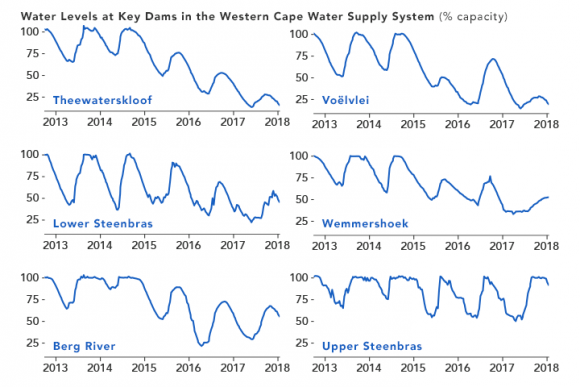
But with the drought going into it’s fourth year, there is once again fear that the water crisis is not going to end anytime soon. According to an analysis performed by Piotr Wolski, a hydrologist at the Climate Systems Analysis Group at the University of Cape Town, this sort of pattern is something that happens every 1000 years or so. This conclusion was based on rainfall patterns dating back to 1923.
However, population growth and a lack of new infrastructure in the region has made the current water crisis what it is. Between 1995 and 2018, the population of Cape Town grew by roughly 80% while the capacity of the region’s dams grew by just 15%. However, the current predicament has accelerated plans to increase the water supply by creating new infrastructure and diverting water from the Berg River to the Voëlvlei Dam (now scheduled for completion by 2019).
For people living in many other parts of the world this story is a very familiar one. This includes California, which has been experiencing annual droughts since 2012; and southern India, which was hit by the worst drought in decades in 2016. All over the planet, growing populations and over-consumption are combining with shifting weather patterns and environmental impact to create a growing water crisis.
But as the saying goes, “necessity is the mother of invention”. And there’s nothing like an impending crisis to make people take stock of a problem and look for solutions!
Further Reading: NASA Earth Observatory
Africa’s First Mission to the Moon Announced
Africa is home to 7 out of 10 of the world’s fastest-growing economies. It’s population is also the “youngest” in the world, with 50% of the population being 19 years old or younger. And amongst these young people are scores of innovators and entrepreneurs who are looking to bring homegrown innovation to their continent and share it with the outside world.
Nowhere is this more apparent than with the #Africa2Moon Mission, a crowdfunded campaign that aims to send a lander or orbiter to the Moon in the coming years.
Spearheaded by the Foundation for Space Development – a non-profit organization headquartered in Capetown, South Africa – the goal of this project is to fund the development of a robotic craft that will either land on or establish orbit around the Moon. Once there, it will transmit video images back to Earth, and then distribute them via the internet into classrooms all across Africa.
In so doing, the project’s founders and participants hope to help the current generation of Africans realize their own potential. Or, as it says on their website: “The #Africa2Moon Mission will inspire the youth of Africa to believe that ‘We Can Reach for the Moon’ by really reaching for the moon!”
Through their crowdfunding and a social media campaign (Twitter hashtag #Africa2Moon) they hope to raise a minimum of $150,000 for Phase I, which will consist of developing the mission concept and associated feasibility study. This mission concept will be developed collaboratively by experts assembled from African universities and industries, as well as international space experts, all under the leadership of the Mission Administrator – Professor Martinez.
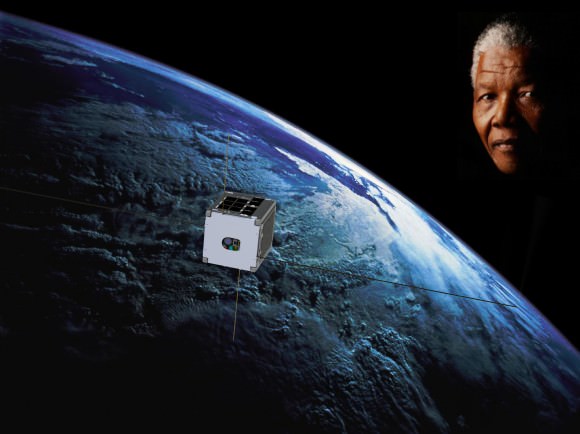
Martinez is a veteran when it comes to space affairs. In addition to being the convener for the space studies program at the University of Cape Town, he is also the Chairman of the South African Council for Space Affairs (the national regulatory body for space activities in South Africa). He is joined by Jonathan Weltman, the Project Administrator, who is both an aeronautical engineer and the current CEO of the Foundation for Space Development.
Phase I is planned to run from Jan to Nov 2015 and will be the starting point for Phase II of #Africa2Moon, which will be a detailed mission design. At this point, the #Africa2Moon mission planners and engineering team will determine precisely what will be needed to see it through to completion and to reach the Moon.
Beyond inspiring young minds, the program also aims to promote education in the four major fields of Science, Technology, Engineering, and Mathematics (aka STEM). Towards this end, they have pledged to commit 25% of all the funds they raise towards STEM education through a series of #Africa2Moon workshops for educators and students. In addition, numerous public engagement activities will be mounted in partnership with other groups committed to STEM education, science awareness, and outreach.
Africa is so often thought of as a land in turmoil – a place that is perennially plagued by ethnic violence, dictators, disease, drought, and famine. This popular misconception belies very positive facts about the growing economy of world’s second-largest and second-most populous continent.
That being said, all those working on the #Africa2Moon project hope it will enable future generations of Africans to bridge the humanitarian and economic divide and end Africa’s financial dependence on the rest of the world. It is also hoped that the mission will provide a platform for one or more scientific experiments, contribute to humankind’s knowledge of the moon, and form part of Africa’s contribution to global space exploration activities.
The project’s current list of supporters include the SpaceLab at the University of Cape Town, The South African Space Association, Women in Aerospace Africa, The Cape Town Science Centre, Space Commercial Services Group, Space Advisory Company, and the Space Engineering Academy. They have also launched a seed-funding campaign drive through its partnership with the UN Foundation’s #GivingTuesday initiative.
For more information, go to the Foundation’s website, or check out the mission’s Indiegogo or CauseVox page.
Further Reading: Foundation for Space Development
Incredible View: Camping Under the Milky Way

During the summer months, many of us hit the trails and do a little camping. But how often do you get a view like this?
Wow! Click on the image above to see larger versions on Flickr.
Astrophotographer Tanja Sund and a companion pitched their tent in the Drakensberg Mountains of South Africa, a 200-kilometer-long mountainous range in the province of KwaZulu-Natal, with the tent sitting just 10 meters from a 1 kilometer-high vertical drop. “This is the home of the Tugela Waterfall, second highest waterfall in the world,” Tanja wrote on Flickr.
“The hike up to the top of the Amphitheatre took about 3 hours from the Sentinel car park, using the chain ladders to reach the summit,” Tanja said. “This is the only day hiking trail which leads to the top of the Drakensberg escarpment. We overnighted next to the Tugela falls to catch the Milkyway, which rises to the east over the local settlements.”
The image was taken on June 29, 2014.
According to the website about Drakensberg, the Zulu people named it ‘Ukhahlamba’ and the Dutch Voortrekkers ‘The Dragon Mountain.’ The Drakensberg Mountains are known for the hiking trails, areas for rock or ice-climbing, abseiling, white water rafting or helicopter rides to view the “awe-inspiring basalt cliffs, snowcapped in winter, that tower over riverine bush, lush yellowwood forests and cascading waterfalls.” At the top of Sani Pass is the highest pub in Africa, at 3,000 meters above sea level. Something for everyone!
Here’s the specs:
Canon 5D Mark III
24-70mm LII f/2.8
Shot at 24mm, F/3.2
20sec single exposures
10x image panorama
Processed in LightRoom & Photoshop.
Check out more of Tanja’s work on Flickr.
Want to get your astrophoto featured on Universe Today? Join our Flickr group or send us your images by email (this means you’re giving us permission to post them). Please explain what’s in the picture, when you took it, the equipment you used, etc.



